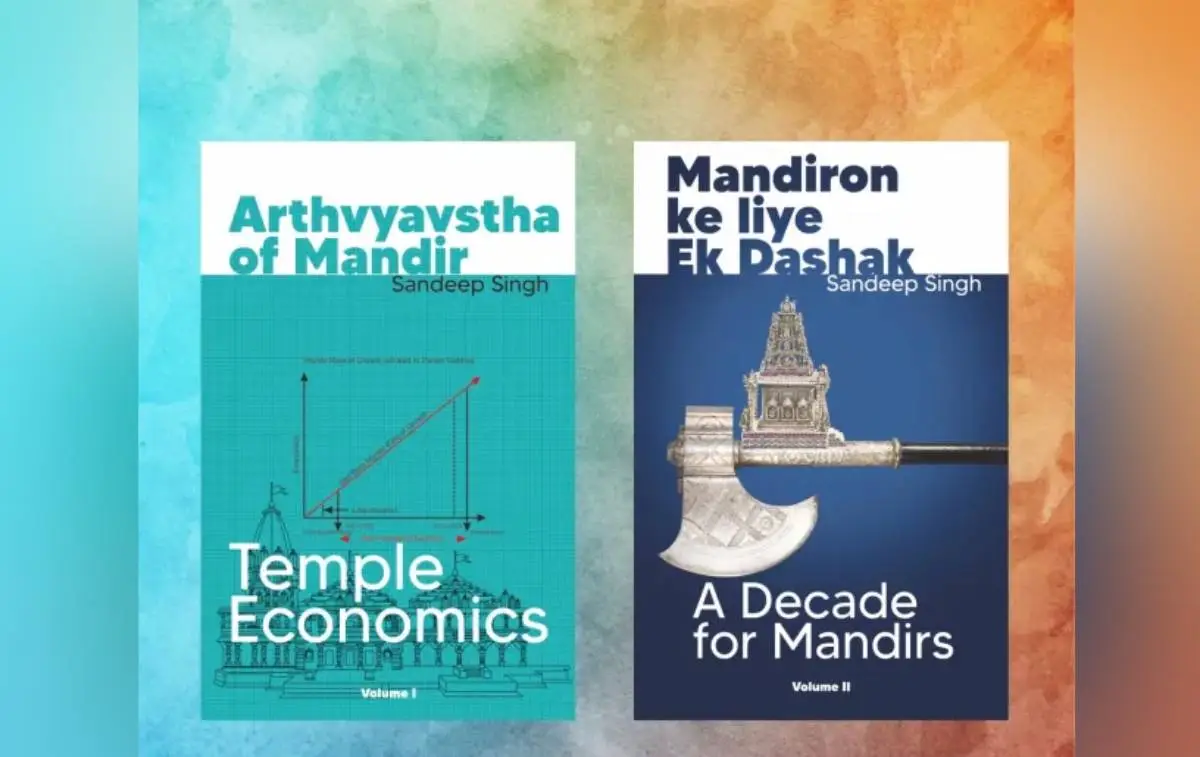
In Focus: India’s Temple Economies
NEW DELHI (IANS) – Temples are integral to Hindu religious practices, they serve as centers for community gathering, spiritual reflection, and the propagation of cultural and philosophical teachings, even playing a pivotal role as generators of economic activity and contributing to the local economy while upholding spiritual values.
In his latest work, ‘Temple Economics Volume 1’, author Sandeep Singh provides a meticulous and eloquent exposition of the profound economic roles that temples have historically played in Hindu civilization.
The work reveals that mandirs have been foundational as dynamic epicenters of economic, social, and cultural vitality.
The Indian system of economy, as established and nurtured by temples since time immemorial, differs from modern or Western economics concepts in its approach.
Mandir-based Arthavywastha integrates ethical, moral, philosophical, and spiritual values, focusing on the well-being of individuals and society, rather than solely on profitability. This system sustains cities for thousands of years, fostering a sense of community and contributing to the overall richness and well-being (‘vaibhav’) of society beyond mere wealth.
While economics concentrates solely on analyzing the production, distribution, and consumption of goods and services, ‘Arthavywastha’ embraces the comprehensive well-being of individuals.
Sandeep Singh draws a distinction between Arthashastra and economics, Arthashastra made India prosperous long before modern economics existed, offering a comprehensive and all-encompassing approach.
Author Singh mentions, ‘It was perfected by Acharya Chanakya and implemented in the Mauryan empire. It is time-tested. Acharya Chanakya pointed out: ‘Arth has a much wider significance than merely wealth. The material well-being of an individual is a part of it’.”
In exploring the dichotomy between industrial economics and temple-based Arthashastra, the author examines the case of Detroit, once known as the heart of the American automotive industry.
Despite its pioneering role in mass production, Detroit faced a decline, losing a quarter of its population from 2000 to 2010 due to shifts in manufacturing to cheaper locations. Similarly, cities like Cleveland, Cincinnati, Pittsburgh, and Toledo, once thriving centers of the new economy, are now collectively known as the Rust Belt.
In contrast, ancient cities like Varanasi, Ujjain, Madurai, and Pushkar, centered around temples, have sustained for millennia, he claims. Arthavyavastha, focused on the well-being of devotees, vendors, and society, contrasts with industrial economics’ emphasis on profitability.



